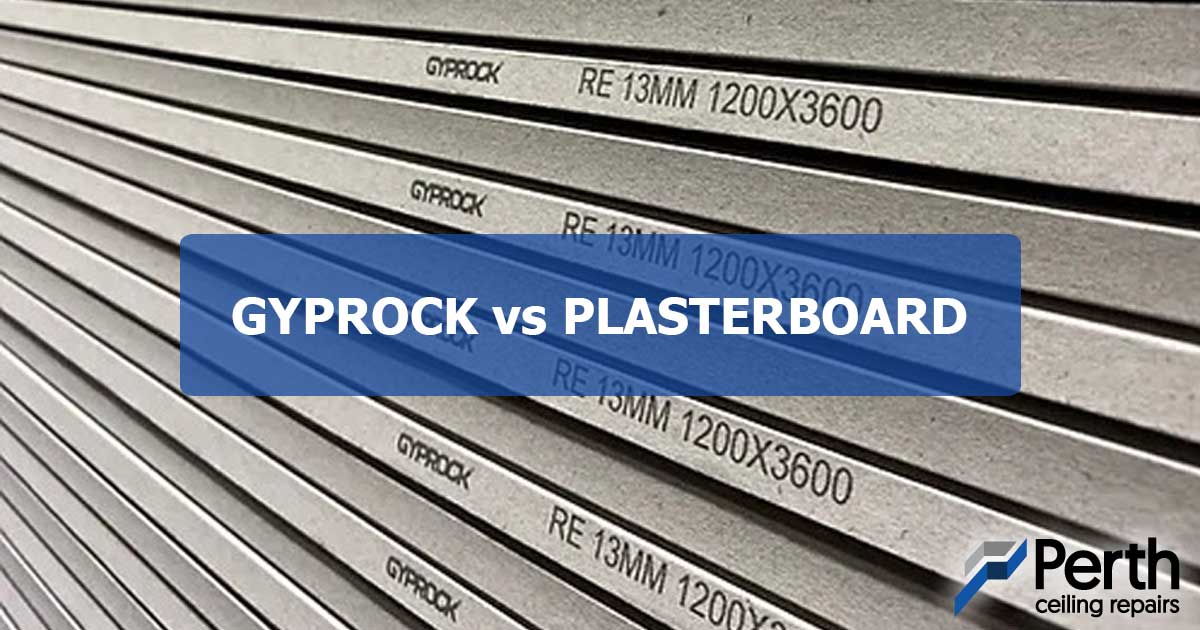
Gyprock vs Plasterboard – What’s the Difference?
Gyprock is a brand-specific type of plasterboard manufactured by a company named Gyprock. On the other hand, plasterboard is a more generic term, encompassing any board made from gypsum.
The construction industry often uses terms like gyprock, plasterboard, gypsum board, and drywall interchangeably. Sometimes, it leads to some confusion. In reality, these terms often refer to the same type of building material, with a few subtle differences. So basically, gyprock or plasterboard, they refer to the same thing.
Gyprock and plasterboard are commonly used in construction and renovation projects as lightweight, easy-to-install alternatives to traditional plaster. They’re ideal for creating walls, ceilings, and partitions and can be finished with paint, wallpaper, or tiles.
When making a gyprock, the gypsum mineral is ground into a powder. It is then mixed with water to form a paste, and shaped into sheets. These sheets are dried and cut to size, forming the base material for both gyprock and plasterboard.
The primary goal with gyprock is to achieve the smoothest possible finish for painting. As it can be challenging for even skilled painters to compensate for a rough wall.
Gyprock and Traditional Plasterboard Comparison
While they’re essentially the same, there are a few practical differences between gyprock and traditional plasterboard that are worth noting for builders and homeowners.
Here are a few differences between them:
- Weight. Gyprock is significantly lighter than traditional plaster, making it easier to transport and install. This feature is particularly beneficial for large-scale projects, reducing the physical strain on workers and simplifying the process of positioning the sheets.
- Ease of Cutting. The lightweight nature of gyprock also makes it easier to cut and shape using various tools, such as saws, knives, or utility knives. While you can use these tools for both gyprock and plasterboard, gyprock tends to be a bit more manageable.
- Durability. Both materials can handle a fair amount of wear and tear. However, regular plasterboard typically offers more durability, while gyprock is slightly more fragile.
- Soundproofing. Both materials are effective at reducing noise transmission between rooms, but gyprock tends to perform better in this regard. This makes it an excellent choice for apartment buildings or other multi-unit dwellings.
- Moisture Resistance. While both materials can withstand a certain level of moisture, some types of gyprock are specifically manufactured to be more resistant to moisture and mould. This makes them a better choice for areas with high humidity or potential water exposure, such as bathrooms and basements.
Dealing with Cracks in Your Gyprock Ceiling
If you notice small cracks in your gyprock ceiling, you might be able to repair them yourself. You can plaster the crack, allowing it to dry, smoothing the surface, and then painting it.
However, for larger cracks or if you’re unsure about the repair process, it’s advisable to seek professional help.
At Perth Ceiling Repairs, we offer efficient and high-quality gyprock ceiling repair services. We can ensure your ceiling looks as good as new.
Contact us today to schedule a repair and restore your gyprock ceiling to its best condition.

